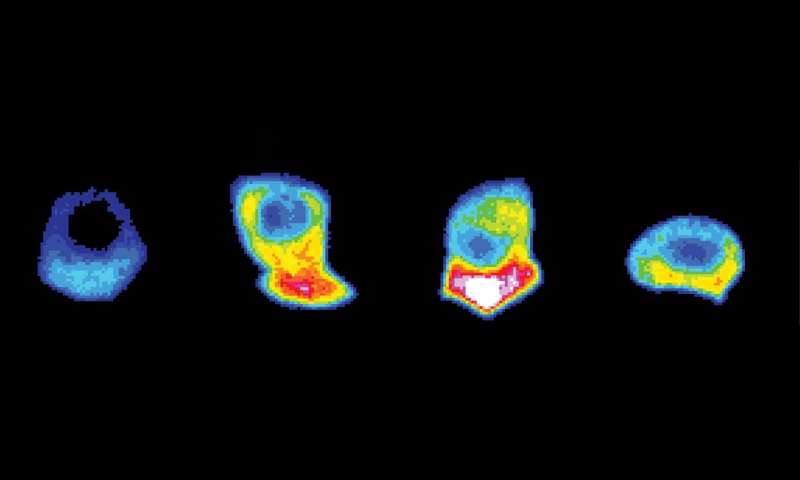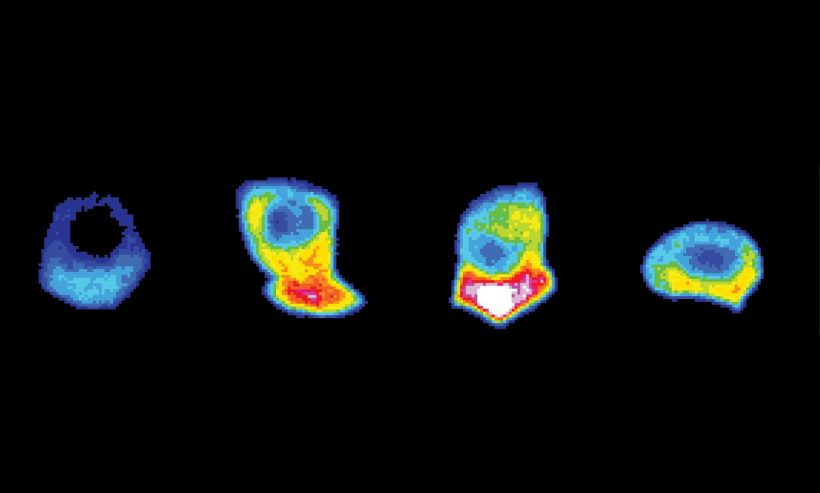
Invading armies need a steady supply of fuel and armaments. That’s just as true when the invaders are cells, such as when tumor cells break away from their neighbors and spread to other parts of the body in a process called metastasis—the most deadly part of cancer.
Now, a Duke University-led study in the tiny worm C. elegans provides new insight into how invading cells amass and deploy fuel to the front lines of invasion to power their cellular break-through machinery.
In a study in the journal Developmental Cell, Duke biology professor David Sherwood and colleagues have identified two glucose transporters that when deactivated, disrupt the energy supply to invading worm cells and even stop some of them in their tracks.
The findings could eventually lead to new ways to cut the supply lines that allow cancer cells to metastasize in humans.
“This is a big deal because it gives us a new aspect of invasive cells to target therapeutically,” Sherwood said.
Metastatic cancer is notoriously difficult to treat. Most cancer drugs work by destroying tumor cells or slowing their growth. But very few of the more than 200 anti-cancer drugs that have been approved for clinical use actually prevent cancer from breaking off from the original tumor and spreading to other organs—the culprit behind the vast majority of cancer-related deaths.
“We have no therapies to target this step as we don’t have a good understanding of how cells breach tissue barriers,” said Sherwood, the senior author of the paper. “It’s ironic, because it’s the most lethal aspect of cancer, but the one that we understand the least.”
Part of the reason is the process has been hard to study. Cancer’s spread is unpredictable, and most cancer cells metastasize deep within the body, beyond the reach of light microscopes.
“It’s hard to spot an invasive cell in the act,” Sherwood said.
So Sherwood’s lab studies a similar process in millimeter-long transparent worms called C. elegans. Before a developing worm can finish building its reproductive tract, a specialized cell called the anchor cell must break through the dense, sheet-like mesh that separates the worm’s uterus from its vulva to clear a path for mating and laying eggs.
Both worm cells and human cancer cells use the same invasive machinery: a barrage of piston-like projections that sprout from the cell surface and pummel their way through tissue barriers to clear a path for cells to pass through, like punching out an escape tunnel.
“The question is, ‘What’s fueling these machines?'” said first author Aastha Garde, a doctoral student in cell biology at Duke. “And can we target that instead of the machines themselves, to deprive them of their source of energy so the machines stop working?”
The researchers used a camera attached to a powerful microscope to peer inside tiny worm cells hundreds of times smaller than a grain of sand and watch their “break-ins” in action.
Garde showed off a time-lapse of an invading cell as it pushed and wedged its way into neighboring tissues. The cell had been engineered with a sensor that lights up whenever an energy-carrying molecule called ATP reaches a certain level, like a cellular fuel gauge. Just as the cell was about to break through, a burst of light appeared behind the cell’s front lines, revealing an outpouring of ATP at the time of the breach.
This ATP is produced by organelles called mitochondria—the energy factories of the cell—that are guided to the cell’s front lines of invasion by a molecular cue called netrin, the researchers show.
The researchers also screened some 8,300 of the worm’s roughly 20,000 genes, silencing them one by one using a technique called RNA interference to see if the worm cells were still able to break through.
They identified two genes that encode gate-like proteins called FGT-1 and FGT-2. These build up along the cell’s borders just before invasion and let more glucose into the cell, where it is broken down to make ATP.
When the researchers deactivated these genes, glucose and ATP levels dropped, and the worm cells stalled their spread. Through the microscope, they could see cells making a feeble effort to put out new piston-like projections, to push through, but most were delayed, and a third of the cells stopped advancing altogether.
“Without glucose, basically the entire machinery that the anchor cell uses to bust through the basement membrane is impaired,” Garde said.
There’s a lot scientists still don’t know about what makes cancer cells metastasize. But the researchers hope their work on worms will help them “find out the Achilles heel of cell invasion,” Sherwood said.
Source: Read Full Article
